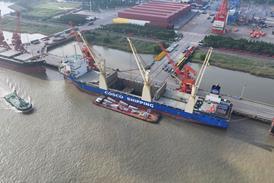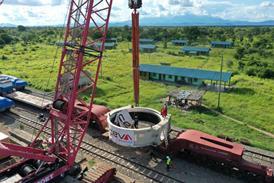Freight insurer TT Club is urging those responsible for transporting lithium-ion batteries to be keenly aware of the hazards. It’s calling for the development of a united approach to enhance their safe carriage. Improved regulatory clarity is required and automotive manufacturers need to address transport safety issues more thoroughly.

TT Club said the rapid development of battery technology and the uncertainties created by these developments, particularly concerning safety when the energy packs are being transported, require the logistics industry to have a clear understanding of the dangers that can include fire, explosions and toxic gas emissions. Moreover, there needs to be increased efforts to minimise the risks, and if necessary, make sure there is an effective response to any catastrophic event.
Peregrine Storrs-Fox, risk management director at insurance mutual TT Club pointed out: “Lithium-ion (li-ion) battery fires are not an everyday occurrence. But when thermal runaway does happen, the result is release of toxic gases such as carbon monoxide and hydrogen cyanide, a very high temperature fire and can spread very fast.” The release of toxic fumes may be the first alert, but fire with temperatures higher than 1,000 °C can be reached in a matter of seconds and, as the mix of chemicals and metals ignites, devastation can ensue.
TT Club was part of a forum of interested parties that was held recently in London. “Supply chain players including shipowners, carriers, forwarders, terminal and port operators and insurers are engaged with these debates. Indeed, the maritime regulator International Maritime Organization (IMO) has its guidance for carriage of these batteries under serious review,” said Storrs-Fox. “But we need to bring manufacturers of electric vehicles (EV) and the batteries that power them actively into the debate. Their ambitions for the development of more powerful, lighter and diverse battery cells must not be allowed to outstrip prioritising safety concerns surrounding their future transportation around the globe.”
Such concerns regarding the battery packs within EVs have been raised in the USA and the National Transportation Safety Board (NTSB) has carried out a study. The forum heard that EVs were reported to have incurred fewer fire incidents than internal combustion engine (ICE) cars. However, there are a few provisos to be highlighted here – not least that there are far fewer electric cars on the road than ICE vehicles.
Secondly, TT Club said it is understood that newer batteries are less likely to ignite or explode than used batteries. Effectively, the older the lithium-ion unit, the greater the chance of an incident. As a result, it is not clear how the batteries will perform through the intended life, given that the switch to EV’s is only now gathering pace and most battery packs are new.
Of course, EVs are just one use for lithium-ion batteries, which can be found in a variety of goods including e-bikes and scooters, as well as computers and mobile phones. All of these goods are transported with batteries in containers. Whilst transported as new, it may be reasonable to expect appropriate packaging, although state of charge is variable, used and damaged batteries present considerable uncertainty for the transport supply chain.
“Currently lithium-ion batteries are classified as one of four UN numbers, depending on power output or the weight of lithium in them and whether they are contained within devices or shipped separately. All four are Class 9 in the IMDG Code - Miscellaneous dangerous substances and articles,” explained Storrs-Fox. “Class 9 is the least hazardous ranking and dates from a change in IMDG Class from 4.3, which was made in the late eighties. Clearly there is a need for a radical review of this classification, as the size and energy capacity of these batteries has altered dramatically since then. As has the volume being carried in container ships.”
This raises concern that these batteries are not classified as sufficiently hazardous and the range of potential Special Provisions increases complexity and uncertainty. All this may have serious ramifications when a container is being accepted for shipment or a ship stowage plan is being compiled. Storrs-Fox concluded: “In addressing the commercial opportunity in the answering the agenda to move away from fossil fuels, there needs to be urgent engagement from manufacturers and OEMs to resolve the justifiable concerns of the logistics industry – ahead of regulatory strengthening.
















